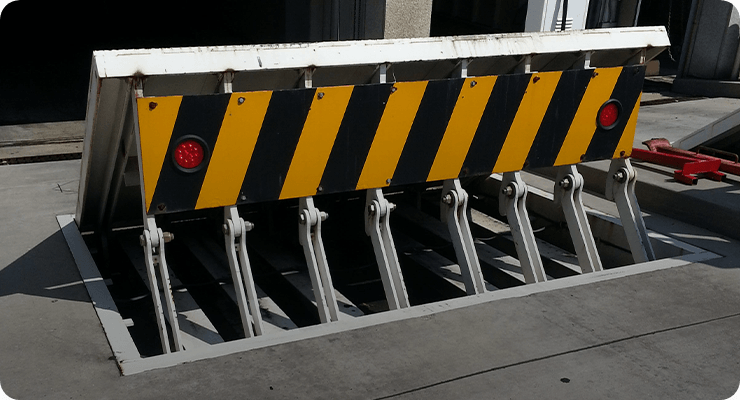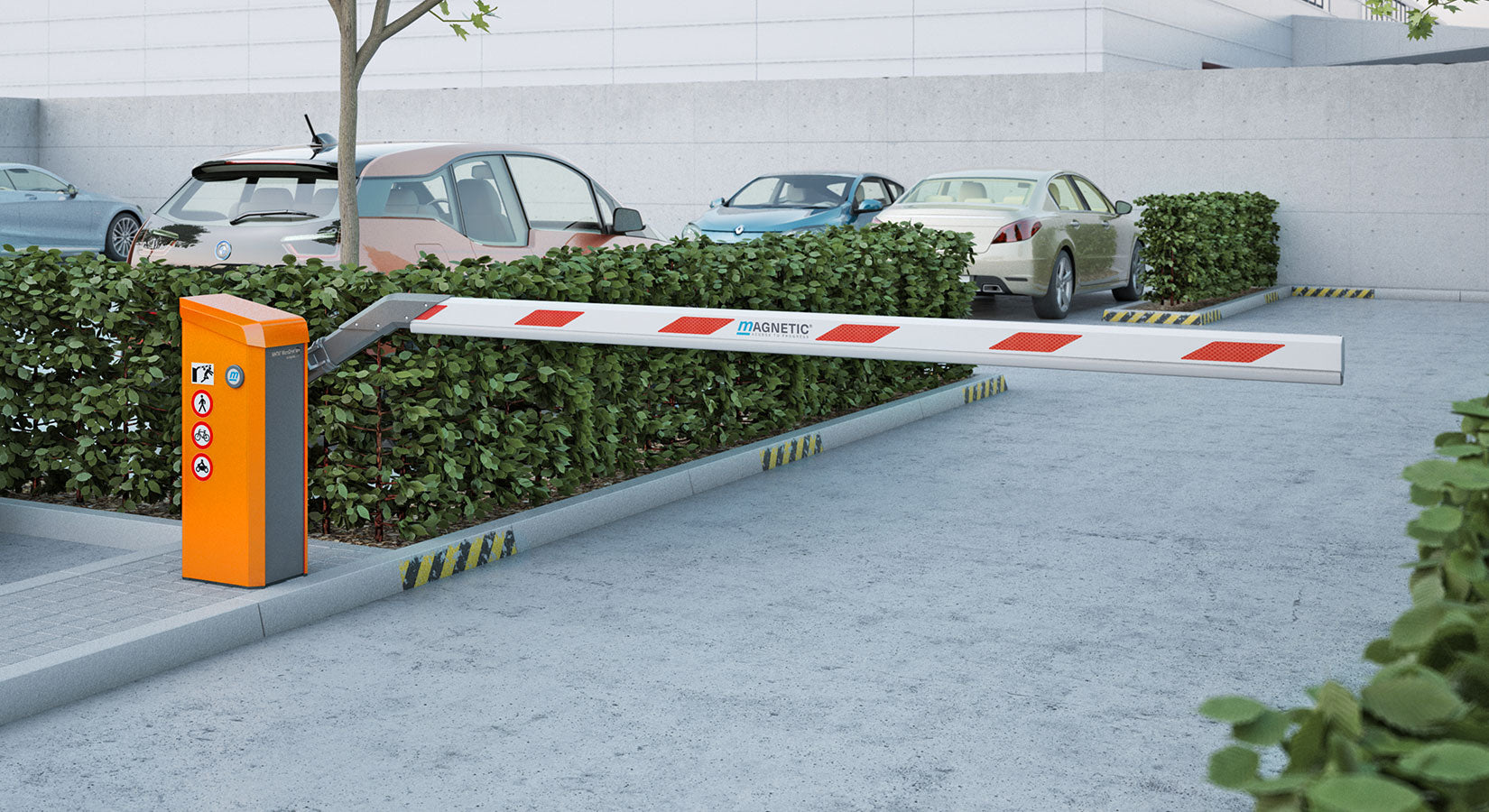Rumored Buzz on Wedge Barriers
What Does Wedge Barriers Do?
Table of ContentsThe 25-Second Trick For Wedge BarriersRumored Buzz on Wedge Barriers

14 and the surface 12 to which the obstacle 10 is secured might be made from concrete - Wedge Barriers. 2, the obstacle 10 is installed to or consists of an anchor or subframe (e. g., support 30 shown in FIG. 2 )secured beneath the surface 12. As an example, the bather 10 may be bolted to the anchor or safeguarded to the support by various other mechanical fasteners. In the detailed embodiment, the barrier 10 consists of a wedge plate 16, that includes a part that is considerably identical with the surface area 12 when the barrier 10 remains in the retracted placement. In various other words, lorries or individuals might pass over the barrier 10 when the barrier 10 remains in the withdrawed setting and experience mild altitude family member to the surface 12 while on the obstacle 10. As discussed in information listed below, when the barrier 10 is in the released placement, the wedge plate 16 is held and supported in a raised position by a lifting device of the barrier 10. Furthermore, the parts 18 may be bolted or otherwise mechanically combined to one an additional. In this way, repair work or substitute of several components 18 may be simplified and structured. That is, fixing or substitute of single parts
18 may be done faster, quickly, and cost efficiently. FIG. In particular embodiments, the anchor 30 might be a steel structure consisting of plates, light beams(e. g., I-beams ), and/or other structures that are protected within the foundation 14, which may be concrete. At the surface 12, a top side 28 of the anchor 30 may be at the very least partly revealed
, thus making it possible for the add-on of the barrier 10 to the support 30. g., threaded openings)in several light beams or plates of the anchor 30 might be subjected to the surface area 12. In this way, bolts 32 or various other mechanical bolts may be made use of to secure the barrier 10 to the support 30. As the barrier 10 is installed to the surface 12 of the structure 14, collection of debris and various other material beneath the obstacle may be reduced, and components of the bather 10 may not be subjected to below quality environments. As indicated by recommendation numeral 52, the lifting mechanism 50 includes components got rid of under the wedge plate 16. As an example, the parts 52 underneath the wedge plate 16 might consist of an electromechanical actuator, a camera, several camera surface areas, and so forth. Additionally, the training device 50 consists of a springtime setting up 54
The springtime pole 58 is coupled to a webcam(e. g., camera 80 revealed in FIG. 4) of the training system 50. The springtimes 60 disposed concerning the springtime pole 58 are kept in compression by springtime sustains 62, including a taken care of springtime support 64. That is, the fixed spring support 64 is taken care of about the structure 14 et cetera of the bather 10.
Some Of Wedge Barriers
The staying pressure used to
the cam web cam deploy release wedge plate 16 may be provided by an electromechanical actuator 84 or other various other. The spring setting up 54 and the actuator 84(e. Wedge Barriers. g., electromechanical actuator)might operate with each other to translate the webcam and lift the wedge plate 16.
As stated above, the spring assembly 54 puts in a constant pressure on the web cam, while the electromechanical actuator might be regulated to exert a variable pressure on the web cam, thereby allowing the lifting and reducing( i. e., releasing and retracting )of the wedge plate 16. In specific personifications, the consistent pressure used by the spring setting up 54 might be flexible. g., electromechanical actuator) is impaired. As will certainly be appreciated, the spring assembly 54 might be covered and shielded from particles or various other aspects by a cover plate(e. g., cover plate 68 revealed in FIG. 4) that may be substantially flush with the elevated surface area 38 of the foundation 14. As pointed out above, in the released position, the wedge plate 16 offers to site web obstruct accessibility or traveling past the obstacle 10. For instance, the obstacle 10(e. g., the wedge plate 16 )might obstruct pedestrians or automobiles from accessing a building or path. As reviewed over, the barrier 10 is connected to the support 30 safeguarded within click to read the structure 14,

front brackets 71. Because of this, the affiliation settings up 72 may pivot and revolve to allow the collapse and expansion of the affiliation assemblies 72 during retraction and deployment of the bather 10. The linkage settings up 72 reason motion of the wedge plate 16 to be limited. For example, if a lorry is traveling in the direction of the released wedge plate 16(e. As an example, in one condition, the security legs 86 may be extended duringupkeep of the barrier 10. When the security legs 86 are released, the safety and security legs 86 sustain the weight of the wedge plate 16 versus the surface 12. Consequently, the training device 50 might be deactivated, serviced, gotten rid of, changed, and so forth. FIG. 5 is partial perspective view of a personification of the surface-mounted wedge-style barrier 10, illustrating the webcam 80 and the web cam surface areas 82 of the lifting mechanism 50. Specifically, two webcam surfaces 82, which are referred to as lower cam surface areas 83, are placed listed below the camera 80. The lower webcam surfaces 83 may be repaired to the surface 12 (e. For example, the lower web cam surface areas 83 and the installing plate 85 may form a solitary piece that is secured to the anchor 30 by screws or other mechanical fasteners. Additionally, go now 2 camera surfaces 82, which are referred to as top camera surfaces 87, are placed over the webcam 80 and coupled to (e. In various other personifications, intervening layers or plates might be placed between the surface area 12 and the reduced webcam surface areas 83 and/or the wedge plate 16 and the top webcam surfaces 87 As pointed out above, the web cam
80 equates along the webcam surface areas 82 when the wedge plate 16 is lifted from the retracted position to the released position. In addition, as pointed out above, the springtime assembly 54 (see FIG. 3 )might give a force acting upon the webcam 80 in the direction 102 through spring pole 58, which may lower the force the electromechanical actuator 84 is required to put on the cam 80 in order to actuate and raise the wedge plate 16. 1 )to the deployed setting(see FIG. 4). As revealed, the webcam 80 consists of track wheels 104(e. g., rollers), which get in touch with and convert along the webcam surface areas 82 during procedure.